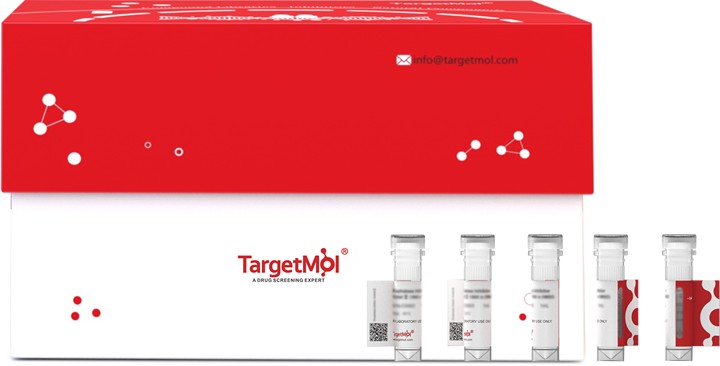- Remove All
 Your shopping cart is currently empty
Your shopping cart is currently empty
ANGPTL3 Protein, Human, Recombinant (His & Avi), Biotinylated
ANGPTL3 is a secreted glycoprotein that is structurally related to the angiopoietins. Mature human ANGPTL3 contains an N-terminal coiled coil domain and a C‑terminal fibrinogen-like domain. ANGPTL3 is expressed in the liver from early in development through adulthood. Acts in part as a hepatokine that is involved in regulation of lipid and glucose metabolism. Proposed to play a role in the trafficking of energy substrates to either storage or oxidative tissues in response to food intake. ANGPTL3 Protein, Human, Recombinant (His & Avi), Biotinylated is expressed in HEK293 mammalian cells with C-His-Avi tag. The predicted molecular weight is 26.6 kDa and the accession number is Q9Y5C1.

ANGPTL3 Protein, Human, Recombinant (His & Avi), Biotinylated
| Pack Size | Price | Availability | Quantity |
|---|---|---|---|
| 100 μg | $814 | 7-10 days | |
| 500 μg | $3,250 | 7-10 days | |
| 1 mg | $5,440 | 7-10 days |
Product Information
| Biological Activity | Immobilized Anti-ANGPTL3 Antibody, hFc Tag at 1μg/ml (100μl/well) on the plate. Dose response curve for Biotinylated Human ANGPTL3, His Tag with the EC50 of 5.0ng/ml determined by ELISA. |
| Description | ANGPTL3 is a secreted glycoprotein that is structurally related to the angiopoietins. Mature human ANGPTL3 contains an N-terminal coiled coil domain and a C‑terminal fibrinogen-like domain. ANGPTL3 is expressed in the liver from early in development through adulthood. Acts in part as a hepatokine that is involved in regulation of lipid and glucose metabolism. Proposed to play a role in the trafficking of energy substrates to either storage or oxidative tissues in response to food intake. ANGPTL3 Protein, Human, Recombinant (His & Avi), Biotinylated is expressed in HEK293 mammalian cells with C-His-Avi tag. The predicted molecular weight is 26.6 kDa and the accession number is Q9Y5C1. |
| Species | Human |
| Expression System | HEK293 Cells |
| Tag | C-His-Avi |
| Accession Number | Q9Y5C1 |
| Synonyms | FHBL2,ANL3,ANGPTL3,ANGPT5,Angiopoietin-like Protein 3,Angiopoietin-5,ANG-5 |
| Construction | Ser17-Lys219 |
| Protein Purity | > 95% as determined by Tris-Bis PAGE; > 95% as determined by HPLC |
| Molecular Weight | 26.6 kDa (predicted). Due to glycosylation, the protein migrates to 30-38 kDa based on Tris-Bis PAGE result. |
| Endotoxin | < 1 EU/μg by the LAL method. |
| Formulation | Lyophilized from a solution filtered through a 0.22 μm filter, containing PBS (pH 7.4). Typically, 8% trehalose is incorporated as a protective agent before lyophilization. |
| Reconstitution | Reconstitute the lyophilized protein in distilled water. The product concentration should not be less than 100 μg/ml. Before opening, centrifuge the tube to collect powder at the bottom. After adding the reconstitution buffer, avoid vortexing or pipetting for mixing. |
| Stability & Storage | It is recommended to store recombinant proteins at -20°C to -80°C for future use. Lyophilized powders can be stably stored for over 12 months, while liquid products can be stored for 6-12 months at -80°C. For reconstituted protein solutions, the solution can be stored at -20°C to -80°C for at least 3 months. Please avoid multiple freeze-thaw cycles and store products in aliquots. |
| Shipping | In general, Lyophilized powders are shipping with blue ice. |
| Research Background | ANGPTL3 is a secreted glycoprotein that is structurally related to the angiopoietins. Mature human ANGPTL3 contains an N-terminal coiled coil domain and a C‑terminal fibrinogen-like domain. ANGPTL3 is expressed in the liver from early in development through adulthood. Acts in part as a hepatokine that is involved in regulation of lipid and glucose metabolism. Proposed to play a role in the trafficking of energy substrates to either storage or oxidative tissues in response to food intake. |
Dose Conversion
Calculator
Tech Support

Copyright © 2015-2025 TargetMol Chemicals Inc. All Rights Reserved.


